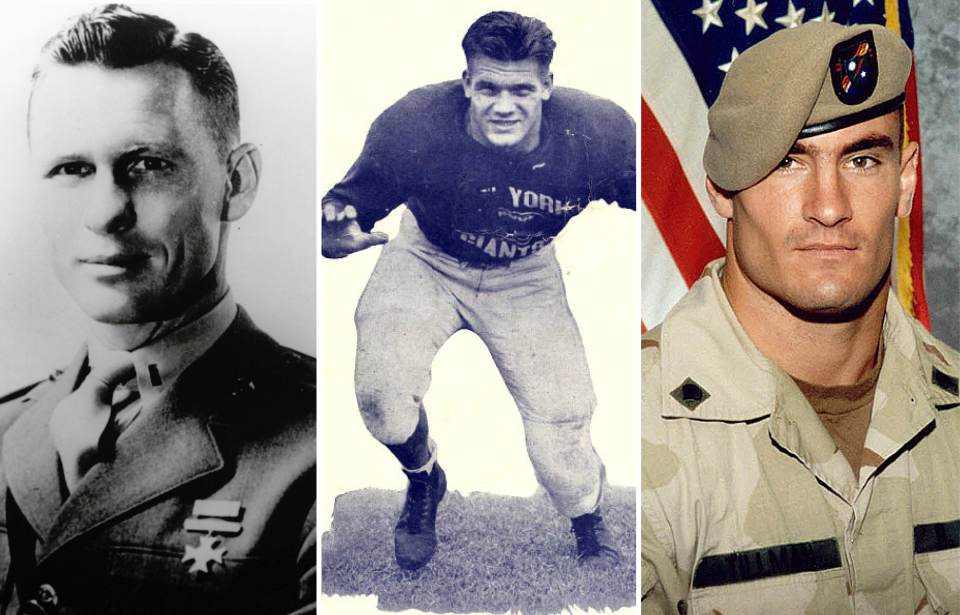Throughout history, numerous National Football League (NFL) players have chosen to join the U.S. military. While this trend has become less common over time, there are still times when NFL players decide to serve. Tragically, some of those who enlisted paid the ultimate price, never making it back home from combat.
Al Blozis
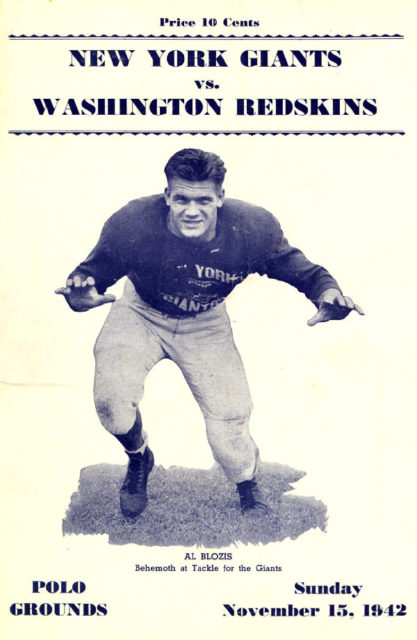
Al Blozis was born in 1919 in Garfield, New Jersey. From an early age, his imposing stature set him apart, and he participated in various track and field events. His abilities earned him a place at Georgetown University, where he competed in shot put, discus, and football.
After graduating, Blozis signed with the New York Giants and quickly made an impact. He earned a spot on the All-Star team in 1942 and was named an All-Pro the following year. Later, he was posthumously honored with a place on the 1940s All-Decade Team and inducted into the Giants Ring of Honor.
For years, Blozis tried to join the US Army, but his exceptional size, which contributed to his football achievements, also led to his rejection from military service. Eventually, he convinced officials to waive the size requirements, allowing him to enlist in 1943. After completing officer training at Fort Benning (now Fort Moore) in Georgia, he was sent to the Vosges Mountains in France.
Tragically, Blozis went missing while searching for two soldiers from his platoon who had vanished. Initially listed as missing in action (MIA), his death was later confirmed, and his remains were interred at the Lorraine American Cemetery and Memorial in Saint-Avold, Moselle, France.
Jack Lummus
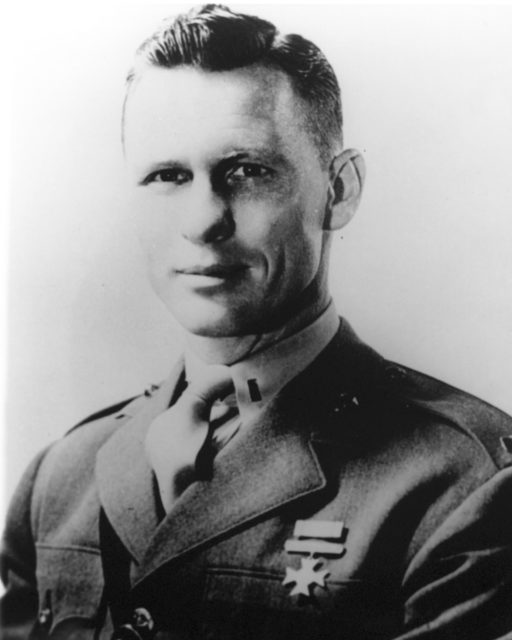
Jack Lummus was born in Ellis County, Texas in 1915. A football and track star, he attended Baylor University on an athletic scholarship. After an All-American career in college, he signed with the New York Giants as a free agent.
While Lummus made the team as a rookie, he only played nine games before World War II broke out. As soon as the season ended, he enlisted in the US Marine Corps and was given command of a rifle platoon on Iwo Jima.
While attacking enemy strongholds during the Battle of Iwo Jima, Lummus stepped on a land mine, losing both of his legs. He later died on the operating table, and was posthumously awarded the Medal of Honor for his valor.
The football player’s commanding officer wrote in a letter to Lummus’ mother, “Jack suffered very little for he didn’t live long. I saw Jack soon after he was hit. With calmness, serenity and complacency, Jack said, ‘The New York Giants lost a good man.’ We all lost a good man.”
Bob Kalsu
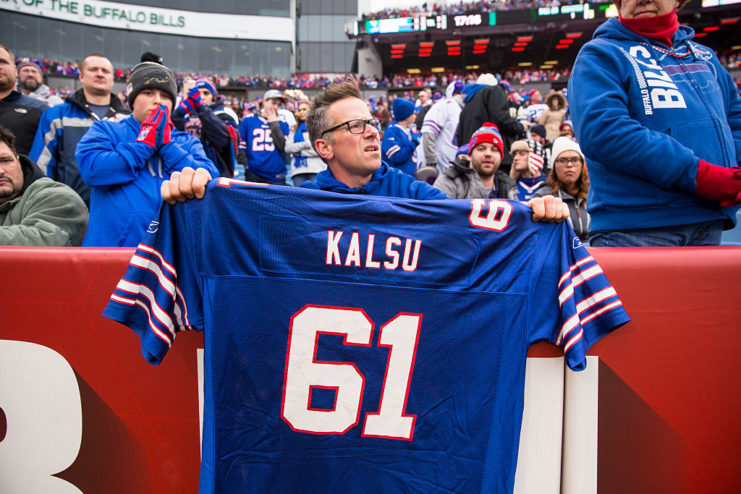
Rather than accepting an athletic scholarship, Kalsu opted to attend the University of Oklahoma on a Reserve Officers’ Training Corps (ROTC) scholarship. Upon graduating, he fulfilled his obligation by joining the US Army, where he was assigned to the 101st Airborne Division.
In November 1969, Kalsu was deployed to South Vietnam. Sadly, he lost his life on July 21, 1970, during the Battle of Fire Support Base Ripcord, when his unit came under a mortar attack. Although his football career was brief, he was posthumously honored with induction into the Buffalo Bills Wall of Fame, and a football stadium at Dell City High School in Oklahoma was named after him.
Don Steinbrunner
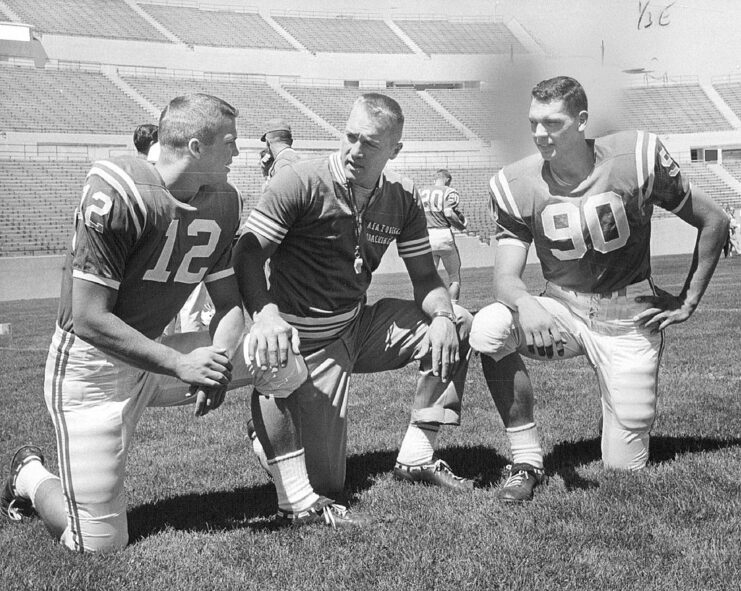
Don Steinbrunner was born in Bellingham, Washington, in 1932. He excelled in both football and basketball at Washington State College, where he served as captain of both teams. After his college career, Steinbrunner joined the Cleveland Browns, playing only one season with the team and competing in the 1953 Championship Game, which the Browns lost.
In 1954, Steinbrunner enlisted in the US Air Force to fulfill his Reserve Officers’ Training Corps (ROTC) obligations. He decided to leave his football career behind due to a knee injury and remained in the service, spending four seasons as a coach for the US Air Force Academy’s football team.
In 1966, during the Vietnam War, Steinbrunner was offered a safe assignment but chose to decline it. In July 1967, the Fairchild C-123 Provider he was aboard on a mission to spray Agent Orange was shot down by enemy small-arms fire, resulting in his death along with the others on board.
Steinbrunner, the first NFL player killed in Vietnam, was posthumously honored with a Purple Heart and the Distinguished Flying Cross.
Pat Tillman

Pat Tillman was a star athlete growing up in Fremont, California, and played college ball at Arizona State. He was drafted by the Arizona Cardinals in the 7th Round and became a key contributor to the team. In 2000, he was named to Sports Illustrated‘s All-Pro team.
Following the 9/11 attacks, Tillman turned down a contract that would pay him over $1 million a year to enlist in the US Army. After completing basic training, he was sent to Iraq as part of Operation Iraqi Freedom. He then attended Army Ranger School, after which he was deployed to Afghanistan.
Want War History Online‘s content sent directly to your inbox? Sign up for our newsletter here!
On April 22, 2004, Tillman was shot near the village of Sperah. While it was initially reported he had been killed by enemy forces, it was later revealed to be a friendly fire incident. Tillman became the first NFL player to be killed in action since the death of Bob Kalsu.
